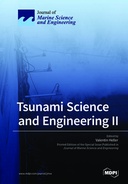Explore

Tsunami Science and Engineering II
Valentin Heller
2019
0 Ungluers have
Faved this Work
Login to Fave
Earthquake-tsunamis, including the 2004 Indian Ocean Tsunami and the 2011 T?hoku Tsunami in Japan, serve as tragic reminders that such waves pose a major natural hazard. Landslide-tsunamis, including the 1958 Lituya Bay case, may exceed 150 m in height, and similar waves generated in lakes and reservoirs may overtop dams and cause significant devastation. This book includes nine peer-review articles from some of the leading experts in the field of tsunami research. The collection represents a wide range of topics covering (i) wave generation, (ii) wave propagation, and (iii) their effects. Within (i), a tsunami source combining an underwater fault rupture and a landslide are addressed in the laboratory. Within (ii), frequency dispersion with the nonlinear shallow-water equations is considered and a detailed account of the 1755 Lisbon earthquake, tsunami, and fire in downtown Lisbon is presented. Two articles involve all three phases (i) to (iii), including runup and dam over-topping. Within (iii), a new semi-empirical equation for runup is introduced and the interaction of tsunamis with bridges and pipelines is investigated in large laboratory experiments. This state-of-the-art collection of articles is expected to improve modelling and mitigate the destructive effects of tsunamis and inspire many future research activities in this challenging and exciting research field.
This book is included in DOAB.
Why read this book? Have your say.
You must be logged in to comment.

